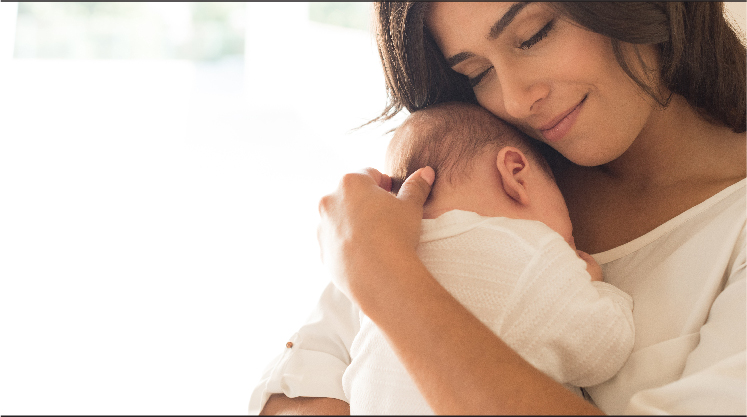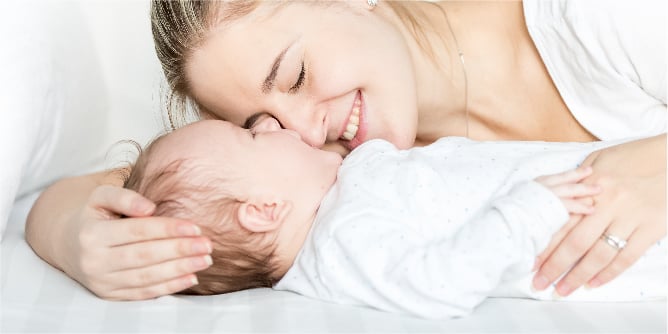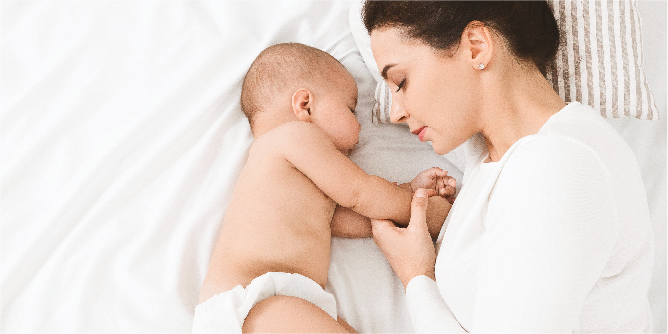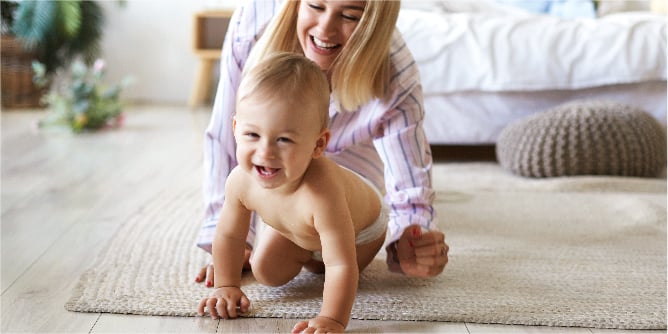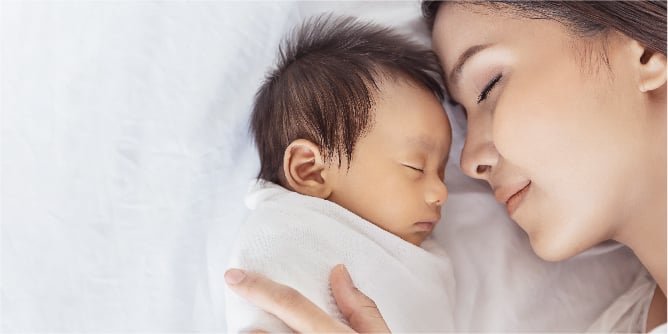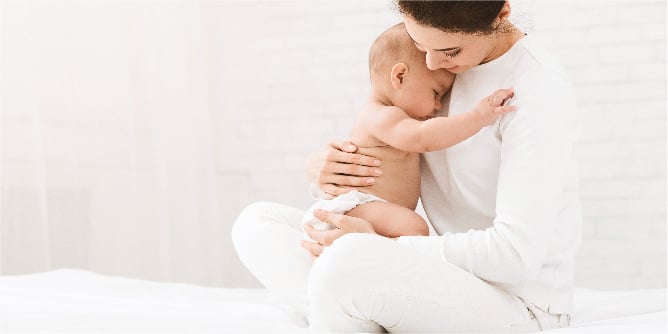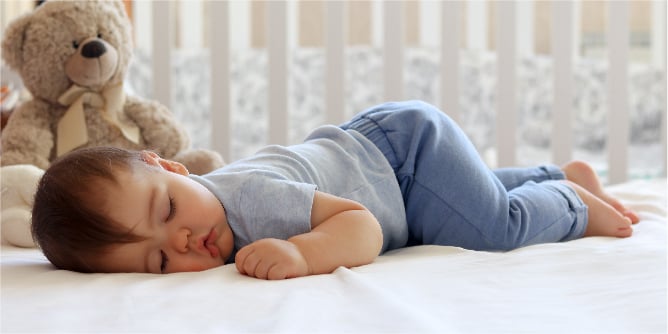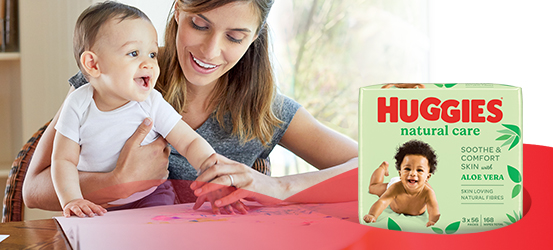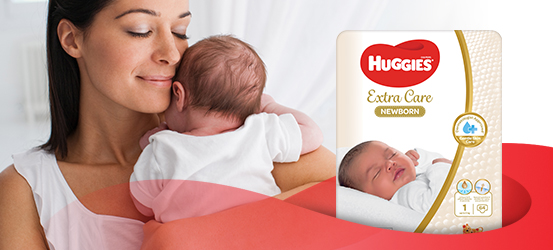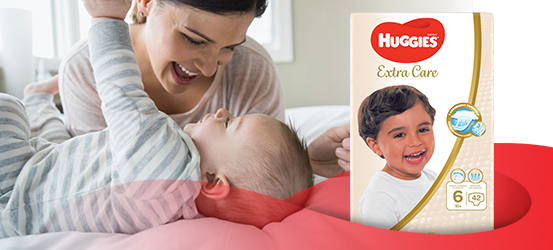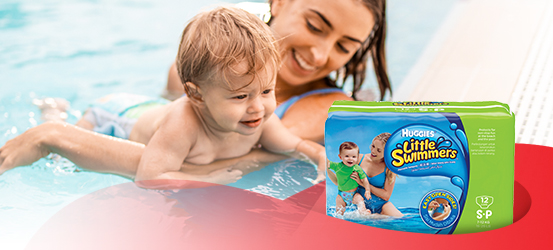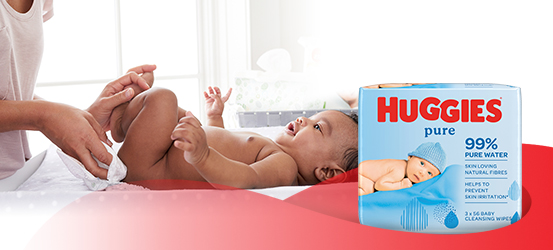Baby skin essentials
A baby's skin is pure and incredibly soft to touch. Most babies will encounter some type of skin condition during their early months - despite mum and dad's best efforts! It is perfectly normal and occurs more often than you might think. We have some simple baby skin care tips that can help to keep it that way!
Sun Protection
Sun protection Preventing direct exposure to the sun's harmful rays is the best way to protect your baby's skin. Just remember, babies under six months should not spend any time in the direct sun as their skin is still developing and can burn easily. If your little one shows signs of overheating or has sunburn, keep them cool, hydrated and indoors.
Protect bub in 5 different ways:
Protect bub's eyes from the glare with wraparound.
Protect bub's face and ears with a brimmed hat.
Cover as much skin as possible with loose clothing.
Use broad spectrum baby sunscreen in between skin folds and on skin that can't be covered.
Stay under cover and in the shade when possible.
Selecting washing detergents
All of your baby's clothes and anything your little one will come in contact with, should be washed before use - this includes blankets, towels and your own clothes. Unless your baby has very sensitive skin or allergies, using regular laundry detergents should not cause any problems.
How to select washing detergents:
Choose the mildest product possible
Avoid products that contain fragrances, perfumes and other additives
Avoid fabric softeners
Liquid detergents are preferred over laundry powder as they rinse better
Areas to pay attention to
A baby's skin goes through many changes and needs gentle, loving treatment. Two of the most common skin problems that baby's experience are dry skin and nappy rash. Luckily, there are some simple ways to tackle them.
Dry skin
Moisturise using a good quality, hypoallergenic lotion to help soothe or prevent dry skin.
Keep baths short and the water temperature slightly cooler than usual.
Give baths every second day, unless needed.
Keep your bub hydrated, by giving them enough to drink - breast milk or formula will suffice for newborns and water is good for older babies and toddlers.
Use a humidifier if the air is dry.
Nappy rash
Change your little one's nappy as soon as you can, after it becomes dirty.
Ensure the nappy area is wiped clean and dried completely before putting on a new nappy.
Use a barrier cream or protective ointment on your baby's bottom at each changetime.
Allow nappy-free time whenever you can.
Don't fasten nappies too tightly so that bub's bottom has some room to breathe.
Baby baths
When to bath
You can start bathing bub in a tub when the cord stump has fallen away and healed.
2-3 times a week is more than enough in the early months.
Avoid bathing right after a feed as bub may spit up from a full tummy.
A bath before bed time can help calm your baby for a restful night.
Bathing basics
Plain water is fine for the first six weeks, don't use soaps and cleansers.
If required, use a mild and pH neutral baby wash that is formulated for your little one's age.
Umbilical cord
Clean the naval area with plain water and/or pH-neutral soap once a day.
After baby's bath or wash, gently pat the stump dry with a soft cloth or towel.
Avoid using an antiseptic as it may result in the stump taking longer to detach.
Nappy area
In between dips in the tub, clean the nappy area with a disposable hypoallergenic wipe or give bub a sponge bath.
Gently pat dry.
Eyes, ear and nose
Soak a cotton ball:
Wipe behind the ears and around the outside of them.
Use a new cotton ball for each ear.
Wipe gently around each nostril to remove mucus.
Wipe the corners of your baby's eyes with a separate cotton ball. Wipe from the inside corner to the outside.
Avoid putting anything inside your baby's delicate nostrils or ears.
Baby bath time checklist
Giving your baby a bath can be a wonderful bonding experience for you and the little one. Preparing ahead of time will ensure that you can focus on your little one, and you can both get the most out of this magical time.
Here is a checklist of things you may need:
Baby bathtub It's easier and safer to bathe a wriggling baby in a small area. A baby bathtub is designed with an incline so that your baby can lay back at an angle. They are particularly useful if you have had a C-section as you can manoeuvre the tub to an easy to reach place.
Soft washcloths These are recommended over a soft sponge as small pieces may fall off the sponge and cause a potential choking hazard. If your baby bathtub does not have a soft or anti-slip lining, line it with a washcloth to make it softer and less slippery.
Baby soap and shampoo It is fine to bathe your baby in nothing but water for the first six weeks. When you do start using cleaners, it is important to choose one that's specifically made for a baby's sensitive skin.
Bath towels or hooded towels It's very useful to have at least two towels on hand at bath time - one for drying your baby and one for wrapping up after wards. Hooded make it even easier to wrap your baby up to keep them nice and warm.
Nail clippers Finger nails are softer after a bath which makes it an ideal time to trim your baby's nails. Special baby nail clippers with a round safety guard will ensure that you don't accidentally hurt your baby. You can also file your baby's nails, if you have trouble with clippers at first.
Baby lotion Baby lotion helps to keep your baby's skin hydrated and smooth. Using it also has the added benefit of being an excellent opportunity to gently massage your baby.
Cotton balls Dipped into warm water, cotton balls are an excellent material for gently cleaning small, delicate regions, such as around the eyes or folds in the skin. Use a new cotton ball for each area.
Baby brush If your baby is sprouting locks already, it's a good idea to use a soft baby brush. The sensation is very pleasant for them and is a lovely way to help them calm down for sleep.
Bath toys Of course, these aren't mandatory. However, if your little one is at the age where they are amused by bath toys, they do provide a happy distraction. This is especially handy if your baby is overtired and not in the mood for a bath.
Baby nails
Your baby is still learning to control their little arms and legs until they are about six weeks old - this is why they may sometimes scratch themselves. Keeping their nails nice and short can help to stop scratches on their faces and yours!
With newborns, frequent cutting isn't necessary as baby's nails will be quite soft. If their nails aren't worn down by their clothing and daily activities, you can give them a gentle trim now and then.
How to trim baby's nails
The best time to trim your baby's nails is after a bath - they will be calm and drowsy, and their nails will be softer.
Use a baby nail clipper or emery board - round off the nail so they're smooth.
Have someone help to make the task easier - one person holds your little one while the other trims the nails.
Play a game or talk with baby to keep them calm and engaged.
Trim toenails straight to prevent nails growing inwards.
Baby skin facts
Sensitivity
It may take up to 12 months for a newborn's skin to mature. In the meantime, it will be very sensitive - up to ten times more than adults!
Babies will develop bumps and rashes along the way. Most are harmless and will go away on their own. Some, such as nappy rash, will cause more irritation than others.
Appearance
Red and purple.
Blue tinge to hands and feet.
Tufts of hair around the scalp, forehead, shoulders and back that disappear within the first few weeks of bub's life.
Skin lightens.
Skin may be come dry and flaky.
Skin easily turns red when baby cries.
Spots such as baby care and milia may appear.
It takes time for a baby's skin to adapt to a new environment:
Your newborn's skin at birth;
After a few days;
Baby skincare do's
Do gently cleanse your baby's skin with a soft washcloth and warm water when needed - especially around their sensitive areas.
Do use skin care products specifically designed for babies, such as baby shampoo and moisturiser, if needed.
Do recognise that most skin conditions, such as baby acne, are temporary and generally heal up without treatment.
Do give your baby some nappy-free time.
Do test new skin care products on a small area of your baby's skin before using.
Do moisturise regularly and follow a skin care routine to prevent dry skin.
Do use baby wipes that are paraben-free. Look for wipes that do not contain soap or alcohol. These additives can irritate the skin.
Baby skincare don'ts
Don't rub skin dry after a bath. Pat skin dry instead.
Don't use adult skincare products as these can contain ingredients that are harmful to your baby's sensitive skin.
Don't try to scrub/pick at any irritated skin. This can aggravate the area and may worsen the condition.
Don't use bleach or fabric softeners when washing your baby's clothing and bedding. The harsh chemicals can inflame your baby's skin.
Don't dress your baby in tight clothing or too much clothing. This can lead to excessive sweating and painful chafing.
Don't try - alternative' products or treatments without consulting your baby's doctor or dermatologist first.
Frequently asked questions
1.What's a good age to start using sunscreen?
It is advised to keep baby out of the sun as much as possible before six months of age. For those trips outdoors with baby, it is better to use broad spectrum baby sunscreen in hard to cover areas than using nothing at all. Try to dress your child in protective clothing, such as brimmed hats and loose long shirts and pants.
2.Can I clean inside the ears?
The inside of baby's ears are delicate and can puncture easily so avoid using items such as cotton buds to clean them. Your doctor or childhood nurse can recommend suitable ear drops that you can use at home. They will also have the proper tools to clean inside your baby's ears.
3.Can I use regular detergent for clothes?
Yes. Unless your child has very sensitive skin or allergies, regular detergent for sensitive skin should not cause any problems for your baby.
4.What should my baby smell like?
The best way to describe how baby smells like would be fresh, clean and sweet. Of course, there are moments when their smell takes a sour turn, especially if they spit up, are a little sweaty, or have a dirty nappy. There are some particular aromas from their body or urine may indicate that baby is not processing certain chemicals in their body properly.
5.Can wipes cause nappy rash?
If your baby has sensitive skin, yes. Some baby wipes can irritate their skin if they contain scented soaps, alcohol and other chemicals. Check out Huggies Wipes which are gentle on baby.
6.Should I use soap to clean during a nappy change?
pH-neutral soaps and warm water can be used to clean your baby's bottom during a nappy change. Remember to pat dry before putting on a new nappy.
7.Can I use my lotions on my baby?
It is not recommended to use skin care products made for adults on your baby. Most contain fragrances, dyes or other ingredients that are irritating to a baby's sensitive skin.
8.When can I use regular soap to bathe my baby?
You can begin to bath your baby with regular soap and cleansers around twelve months. Before then, stick to baby washes or mild soap as the lathering quality of regular soap dries out their skin.
9.Are cloth nappies better for my baby's skin?
It depends. Your baby can benefit from cloth nappies if they are sensitive to disposable nappies. Cloth nappies can also cause problems for your baby's skin if they are not washed or rinsed properly. The key to healthy baby skin care is to keep baby's skin clean and dry. Check here for more on Huggies Nappies.

